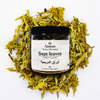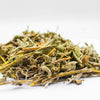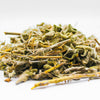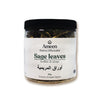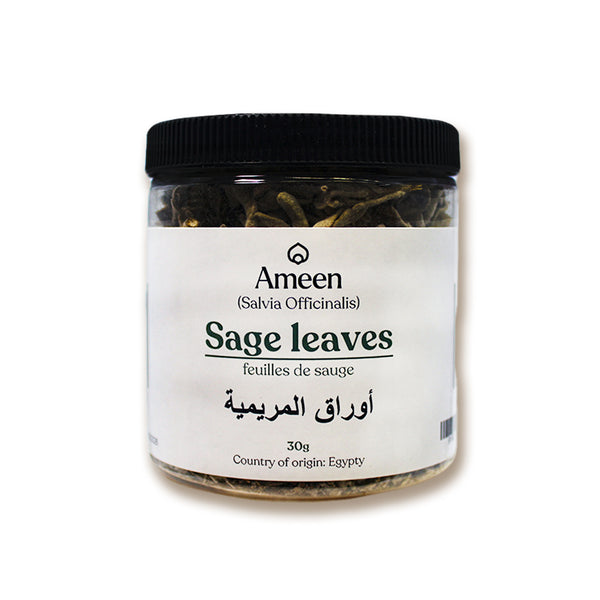Sage Leaves, derived from the Salvia officinalis plant, are an essential herb in global cuisine, herbal traditions, and aromatherapy. With their distinct earthy, slightly peppery flavor and rich fragrance, sage leaves have been cherished for centuries in both culinary and wellness applications.
Flavor Profile & Culinary Uses
- Robust, Earthy, & Slightly Peppery: Pairs well with savory dishes, meats, and roasted vegetables.
- Classic Ingredient in European Cuisine: Essential in Italian, French, and Mediterranean recipes.
- Perfect for Infusions: Used in butter sauces, soups, stews, and herbal teas.
- Popular in Seasoning Blends: Commonly included in stuffing mixes, spice rubs, and marinades.
Traditional & Herbal Applications
- Aromatic & Soothing: Used in herbal teas and steam infusions.
- Cultural & Spiritual Uses: Burned as smudge sticks for purification rituals.
- Natural Preservative: Known for its culinary and botanical preservation qualities.
- Essential in Personal Care: Used in natural skincare, hair care, and herbal mouthwashes.
Why Choose Sage Leaves?
- Versatile & Flavorful: Enhances both savory and herbal recipes.
- Timeless & Aromatic: A staple in kitchen, wellness, and spiritual traditions.
- Perfect for Teas & Infusions: Adds depth to hot beverages and botanical blends.
Botanical & Cultural Significance
Botanical Name: Salvia officinalis
Common Names:
- English: Sage, Common Sage, Garden Sage
- Sanskrit: साल्विया (Salviya), त्रिफल (Triphala)
- Hindi: सफेद तुलसी (Safed Tulsi), साज (Saj)
- Urdu: سیج (Sej)
- Tamil: சாள்வியா (Salviya)
- Telugu: సాల్వియా (Salviya)
- Malayalam: സാജ് (Saj)
- Kannada: ಔಷಧಿ ಸಸ್ಯ (Aushadhi Sasya)
- Marathi: साज (Saj)
- Gujarati: સાજ (Saj)
- Bengali: ঋষি পাতা (Rishi Pata)
- Punjabi: ਸੇਜ ਪੱਤਾ (Sej Patta)
- Malay/Indonesian: Daun Sage
- Thai: ใบเสจ (Bai Sech)
- Chinese: 鼠尾草 (Shǔ wěi cǎo)
- French: Sauge
- Spanish: Salvia
- German: Salbei
- Russian: Шалфей (Shalfey)

